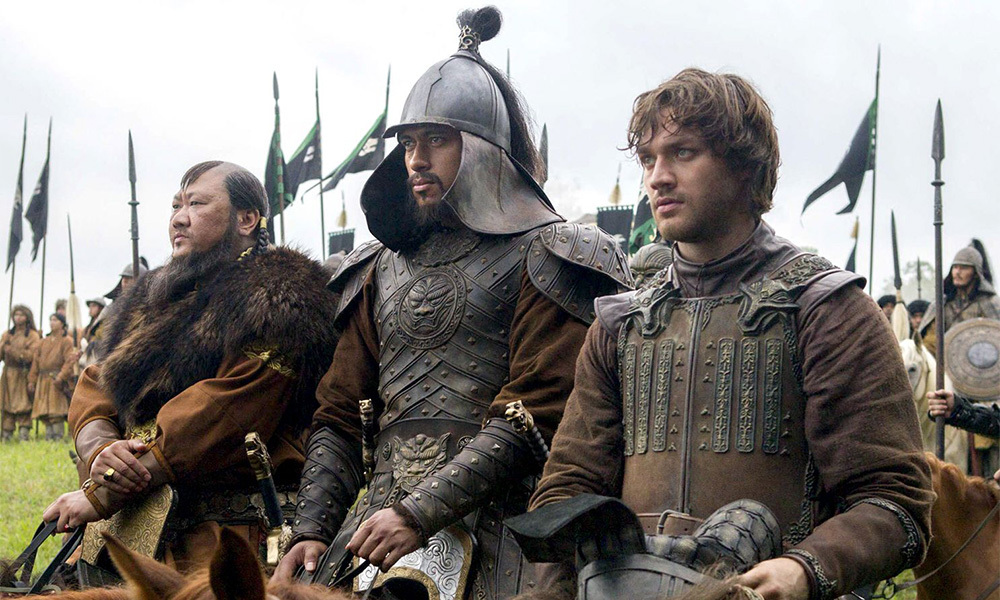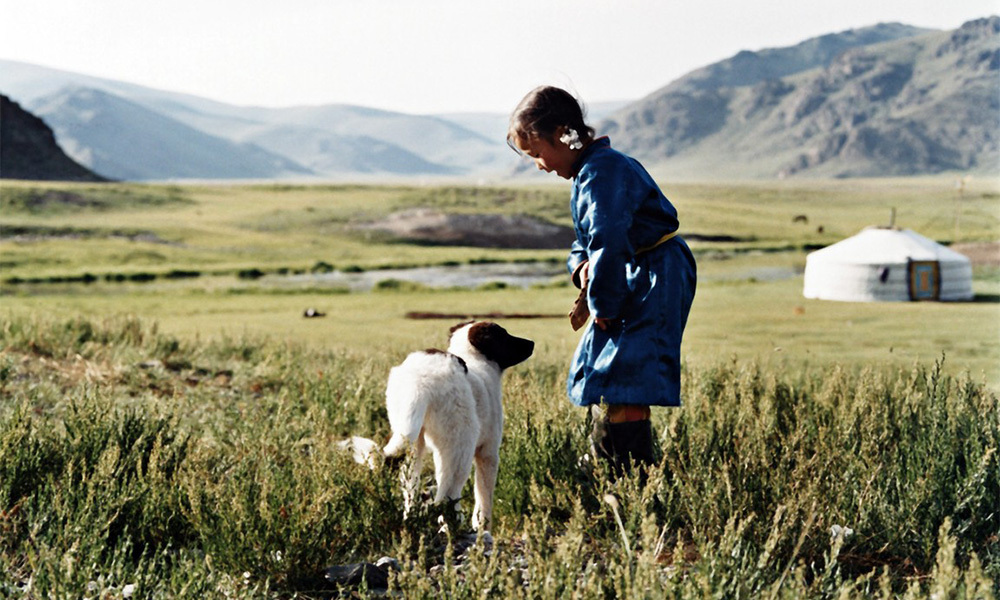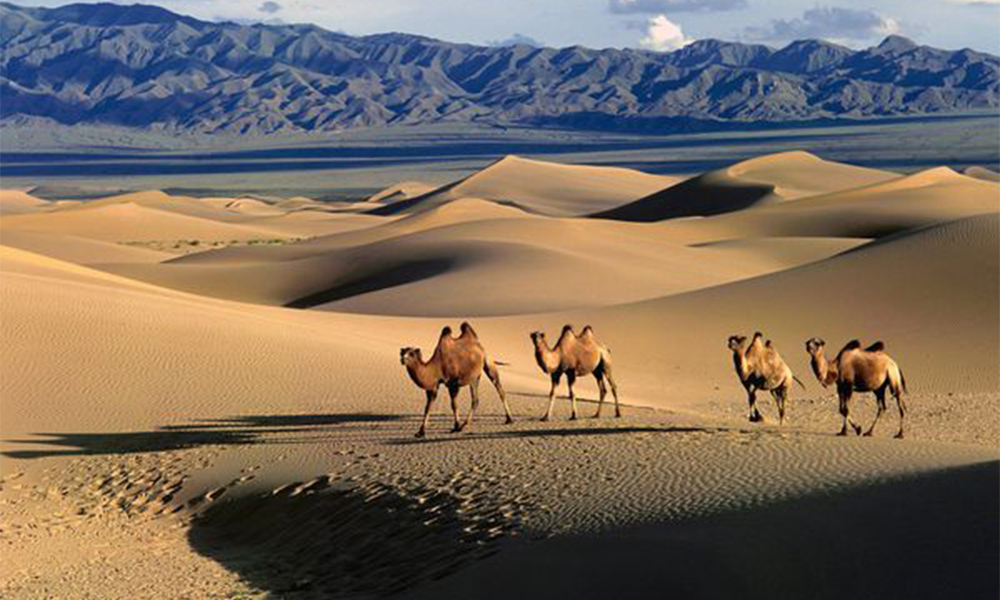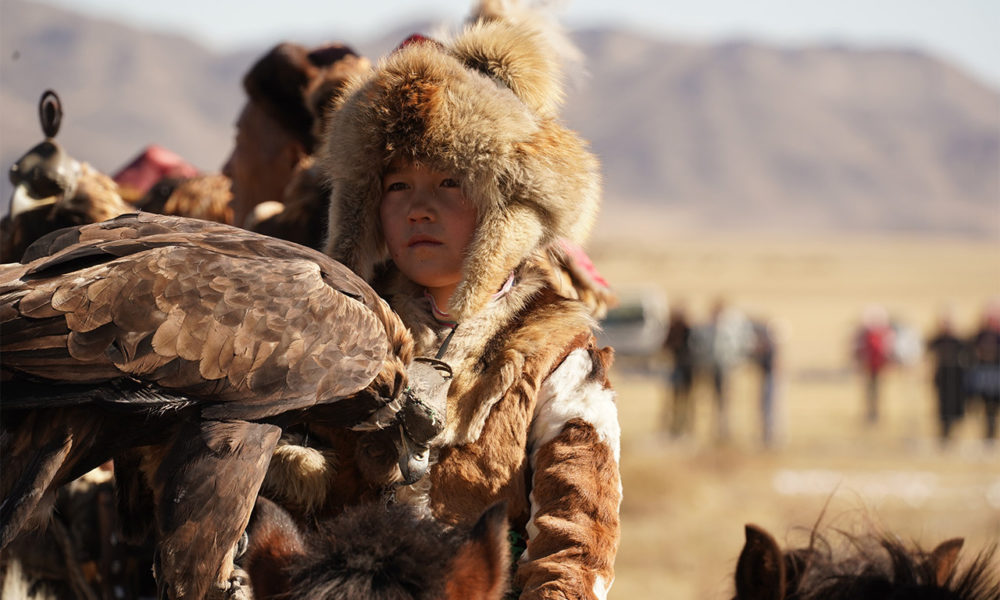While travel to Mongolia remains restricted for the time being, we can still enjoy seeing its epic nomadic lands in the stunning photography of movies and TV series. Here we share some of our favorites showcasing Mongolia. Films have certainly led to many countries seeing increased tourism, such as New Zealand following The Lord of the Rings. So whether you’re looking for a good story or a glimpse at what a Mongolia adventure might entail, you will certainly find it in this sampling of dramas and documentaries set in our storied land. We hope that they inspire your wanderlust as much as they do ours.

Marco Polo
Season 3 of the successful TV show Marco Polo releases on Netflix on June 25. The series, which costs an astonishing $9 million per episode, centers around the highly fictionalized exploits of Marco Polo in the court of Kublai Khan (grandson of Chinggis) in 13th century Mongolia, which spanned much of Asia. Polo, a young Venetian trader, is offered to the Mongolian emperor as a servant in exchange for freedom to trad along the Silk Road. Though the show has all the hallmarks of a Hollywood version of history, it nonetheless showcases beautifully what this golden age of the empire looked like. Viewers are introduced to gers, the capital of Karakorum, traditional clothing, traditional music, the horsemanship, the archery…
Weeping Camel
A mesmerizing docudrama, Weeping Camel follows the adventures of a family of camel herders in Mongolia’s Gobi Desert as they try to save the life of a rare white Bactrian camel calf after it is rejected by its mother. The family decides to employ a nomadic singing ritual to coax the mother into nurturing her young. They send the two eldest sons on a journey to the nearest village to fetch a musician for the ritual. The bonds between the people and the animals they raise–and between the mother/child bond at the center of the story—all unfold without special effects, or carefully written dialogue—and entirely on location.
Eagle Huntress
The 2016 documentary The Eagle Huntress features a remarkable 13-year-old girl named Aisholpan as she learns the art of falconry from her father in preparation for competing in the Golden Eagle Festival. The founder and CEO of the Three Camel Lodge also founded the Golden Eagle Festival back in 1999 as an sustainable initiative to help preserve the art of falconry practiced by the Kazakhs in the Altai Mountains of Mongolia. The film has stirred tremendous interest in both this ancient tradition of Mongolia’s Kazakhs—and in traveling to experience the festival firsthand. When the festival began, there were only an estimated 100 practitioners of Golden Eagle falconry. Today there are as many as 300. And a decade after the festival’s founding, UNESCO designated Mongolia’s Golden Eagle falconry an example of living human heritage on its “Intangible Cultural Heritage of Humanity” list.
Echoes of the Empire
This stunning cinematic view of Mongolia’s past and present delves deep to reveal the nature of Mongolia’s people through intimate stories told by everyone from nomads to city dwellers. New York Times best-selling author Jack Weatherford (“Genghis Khan and the Making of the Modern World”) features prominently, as the stories collectively provide rare insight into the psyches and the challenges faced by Mongolia’s people in their post-Soviet world. The film’s rich soundtrack weaves from ancient throat singing to Russian-influenced opera to contemporary Mongolian rock, providing evocative texture.

The Cave of the Yellow Dog
Shot on location in the Altai region of the Mongolian steppe with a real nomadic family, The Cave of the Yellow Dog blurs the line between documentary and fiction. A young girl named Nansal stumbles upon a dog while walking in the plains and decides to bring it back to her family’s yurt. Her father demurs, however, worried that the dog will attract wolves, and demands his daughter leave it behind when they move for the winter. One of the key virtues of the film, according to the New York Times is “the earth and the sky seem to stretch on without limit,” as it does in real life.
Two Horses of Genghis Khan
A singer travels from Inner Mongolia to Outer in search of missing verses of an ancient song of the Mongols, “The Two Horses of Genghis Khan,” once engraved on the horse head violin of her grandmother, who was forced to destroy during the Chinese Cultural Revolution. The young woman brings parts of the violin to a renowned maker of horse head violins to rebuild the instrument, then departs in search of the missing verses, searching among people she meets for anyone who still knows the old melody of the Mongols.
The Horse Boy
The Texas family of a pre-adolescent boy with autism recognizes the improvement in young Rowan when he rides their neighbor’s horse. So they decide to travel to Mongolia, the one place in the world where horses and shaman healing practices intersect. In this heartwarming story, Rowan responds to the shaman’s unusual combination of healing ceremonies and horseback riding, and a family fearing their son may never communicate with them sees their boy learn to connect with the world.
Babies
This 2010 documentary explores the lives of four babies from around the world—Mongolia, Namibia, San Francisco and Tokyo. Shot over 400 days with virtually no narration and mostly indistinct speech, the film is a testament to how compelling infants are at this stage of development, and how universal the language of babies is. Indeed what connects us is far more significant than the ways humans differ.

Planet Earth: Deserts
This mesmerizing TV mini-series from 2006, narrated by David Attenborough, explores the Gobi Desert, featuring the harsh environment and its extremes of temperature ranging from -40 degrees Celsius to +50 degrees Celsius—home to highly adapted species such as the Bactrian camel. It shows just how beautifully pristine and starkly tranquil this expanse of the world is.
Planet Earth: Great Plains
A later episode of Planet Earth from 2009 features other dramatic species of Mongolia—the Mongolian shows a herd of Mongolian gazelle dramatically flee a bush fire, moving on to new grazing on the great steppe. The documentary demonstrates how closely entwined life here is to the passage of the seasons, as vital grass can appear and disappear swiftly.

